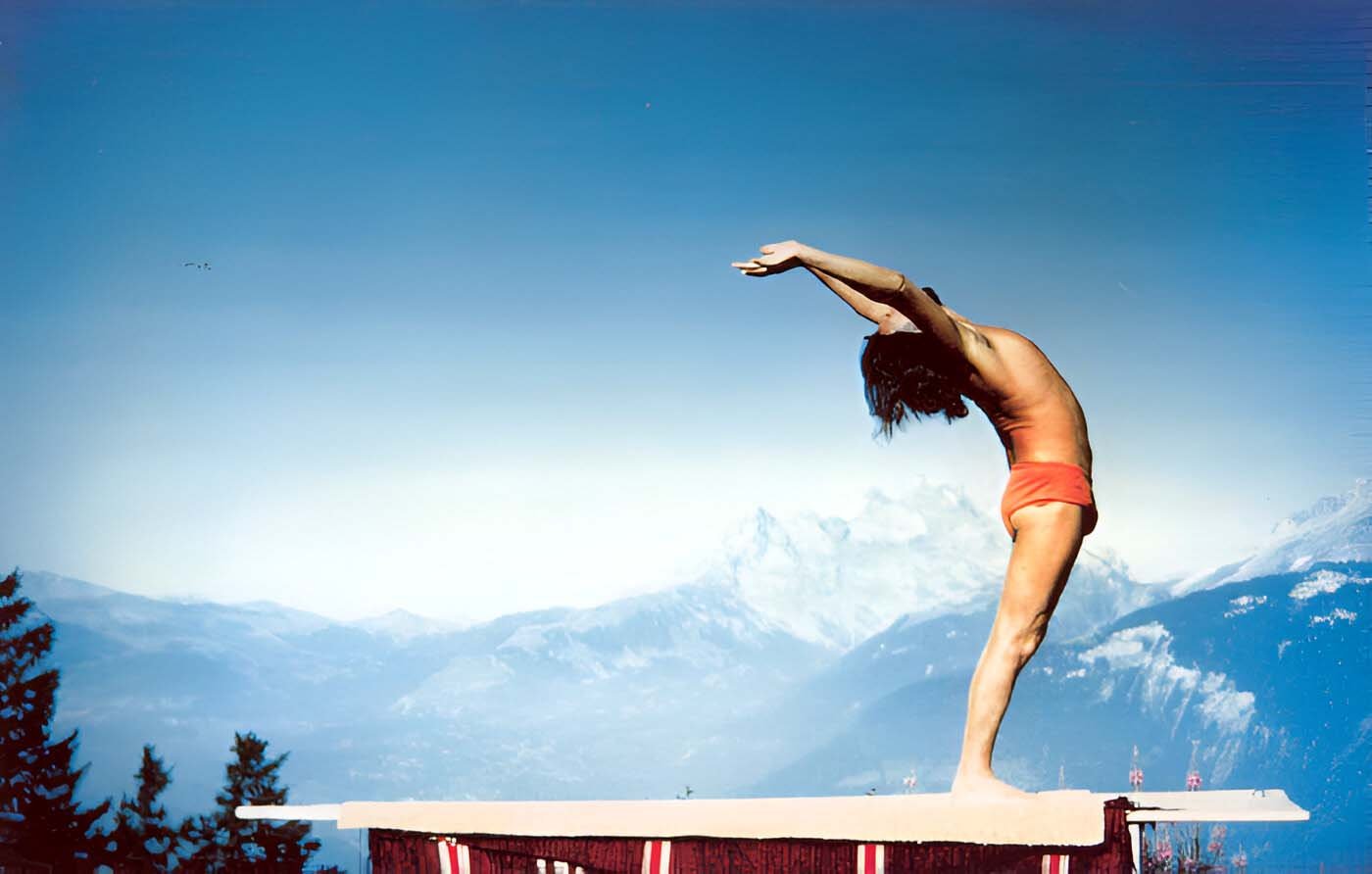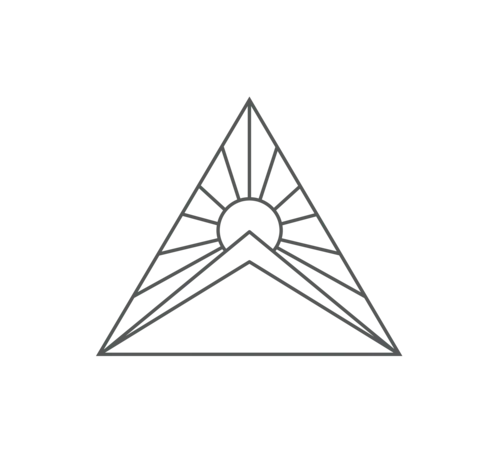Maurice Daubard
CHANDRASANA
(the crescent moon)

Have you ever admired the beautiful crescent moon in a clear sky on a beautiful night riddled with stars, in the period when this moon of purest silver, finely, aerodynamically and geometrically designed to its two ends, transports us with dreams.
So let’s dream together and translate this dream into our being.
This posture requires a great deal of body control, mentalization and heart. All our attention will be focused on understanding and learning how to bring the skeletal mechanics into play, from the feet to the head, by breaking down all the body’s joints. In the standing position, awareness will first be focused on the positioning of the feet and then gradually move upwards, passing through each of the vertebrae (in fact, it’s a subtle interaction). I like to say that “a yogi must know how to master each of his vertebrae, like a pianist knows each key on his piano”. The exercise will be repeated for as long as it takes until it’s perfect. This precious work will constitute the Chandrasana “posture setting”. The student will be able to discipline his body, which has a tendency to settle into easy, compensatory regions, in particular by compensating with lumbar arching to the detriment of the dorsal region.
As a former student of the famous vertebrotherapist De Sambucy, I learned a great deal from him about postural knowledge and control of the spine. I have made this knowledge a classic basis of my teaching, and the specific work on the shoulder girdle has been of particular interest to me. It is also an essential and precious tool for achieving the Chandrasana posture.
I call this work the shoulder joint grand écart, a series of exercises in which the student lies flat on the floor in front of the first rungs of a wall-mounted espalier, body straight, arms stretched to the limit, and grasps the first rung of the espalier with a distance between the 2 hands corresponding precisely to the width of the shoulders, the tips of the floating ribs never leaving the floor. He will let his chest relax (without pushing). The work will always be based on breathing out.
The change of bar will be progressive to try to reach little by little the highest bar which can be reached without that the point of the floating ribs does not take off from the ground not to solicit the lumbar area.
This gradual work over time is a marvel. It has a double positive effect:
It releases tension by relaxing, which has the advantage of slowing down the ageing process.
It makes the whole upper shoulders/back area more supple, and relaxes you in the evening after a day with a ‘full back’.
For over 25 years, I’ve been advising yoga teachers to use the espaliers. This exercise finally represents hope for all those with back congestion and shoulder blockage. Many older people suffer from rheumatism and osteoarthritis of the shoulder joints, often simply because of the tension accumulated in these areas.
De Sambucy explained to me that he calls this area “the sponge of Christ” or “the cross of Jesus”. The vertical is the spine and the horizontal is the line between the 2 shoulders. At the centre of this cross is the “target of tension”, a circle located at the junction between the 7th cervical and the 1st dorsal vertebrae.
It’s this whole region that collects all the residual tension from the individual’s suffering and becomes locked, I’d even say concreted in, and working in this area as I propose is an essential key to opening this lock physically and accessing the physiological, i.e. the circulation of blood and other subtle energies: opening the Anahata Chakra (opening our heart).

But let’s get back to our enchanting crescent moon…
Here we have the means to reach the Chandrasana posture in the basal part. To idealise the posture: stand in front of a white wall and place a spotlight on yourself so that you cast a shadow on the wall with your body in profile. Someone with a felt-tip pen will draw on the shadow the curvature of your body to the perfect crescent moon pose. When the sketch, the final sketch, allows you to see that you have been able to erase the hollows and bumps and achieve this finesse from the feet to the tips of the hands, you will have Chandrasana. You will then be able to begin the actual execution of the posture.
Secondly, we will be able to intervene physiologically in the sense of knowing how to stretch your body like a rubber that you pull upwards from the bottom, with your head not tilted backwards but enclosed in your arms, which will always be stretched secondarily, knowing how to keep your shoulders horizontal, taking care not to bring your shoulder blades together. (The head should only be tilted backwards when the posture is dominated, to avoid falling into the classic trap of ‘breaking’ the lumbar region and the cervical region, when in fact not much is happening at the dorsal level).
The main place of activity is the chest, the tabernacle of the subtle heart. The sternum, wide open and alive, becomes the centre of interest. To grow, to open this place with intensity, but without violence or pain. Then, either I simply finish this posture (and it remains Chandrasana), with a sudden surge of heat that rises from the shoulders to the tips of the hands, often accompanied by a second current, this time of coolness or even tingling, which is the normal benefit.
Or the posture leaves Chandrasana and moves directly, from the opening upwards, into Prana (the subtle magnetic current described above: heat, coolness, tingling) Shanti (peace) Mudra (enclosing). Prana Shanti Mudra, here we go:
With my arms raised towards the sky (Prana), I feel the breath of the Ujjayi pranayama gently flowing across the top of my open, enlarged, living chest. Then, gradually spreading and lowering my arms (to the resurrection position of Jesus), I open wide the tabernacle of my heart to receive this intimate and subtle communion, a true celebration of hope and teaching in the making (Shanti).
There was an emotional moment when I ceased to exist within my human limits.
A few moments later, I lock these magical moments deep inside myself (Mudra), folding my arms extremely slowly, until I’m in the prayer position, hands together, level with the heart (chin slightly lowered). As I lower my arms, the open palms of both hands should brush against my face without touching it.
Chandrasana is the link that leads to the higher dimension of Prana Shanti Mudra, towards sacredness.
Like the oyster which, just once in its life, rises to the surface of the ocean to receive a certain drop of water through a particular rainfall, then sinks with it to the bottom of the sea to transform it into a single pearl, Prana Shanti Mudra, combined with Chandrasana, is a true consecration.
In any case, this is how I feel it, how I live it and how I encourage others to live it and make others live it.
This set of exercises can be applied in many circumstances, in a room or in nature, in the rising or setting sun, in front of a mountain, a tree or any other possible support, musical, emotional etc…
And of course, this experience is an integral part of Toumo Yoga. For example: during the morning sitting meditation in the cold (in a sitting variant); during a meditative walk; after a snow bath in powder snow; after a bath in a river or lake; after a shower under a waterfall… (Maurice DAUBARD)


